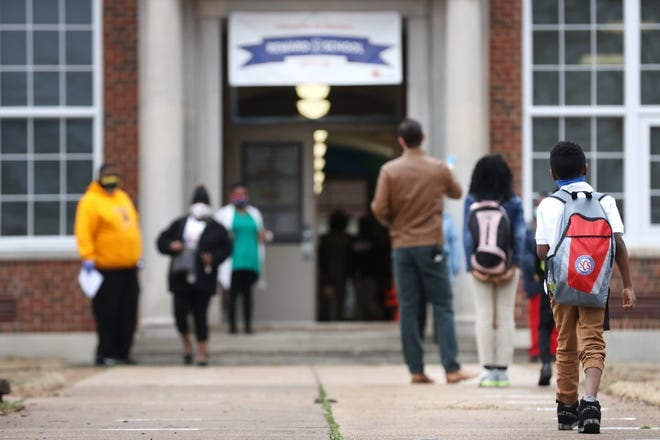Enrollment in Tennessee’s largest school district has shrunk for the second year in a row.
Nearly 4,000 fewer students are enrolled in Shelby County Schools, including charter schools, this school year, according to 60-day counts for the 2021-22 academic year released by the district on Tuesday. That represents a decrease of just over 3% from 2020-21.
Declining enrollment is not unique to Memphis. As the pandemic continues to wreak havoc on education nationwide for the third calendar year, large public school systems in New York, Los Angeles, and Chicago have also reported sizable headcount reductions.
While it’s difficult to explain why enrollment is declining, Memphis administrators pointed to national trends that suggest a growing number of parents are pulling students out of public schools during the pandemic. Instead of having to worry about their children’s schools going virtual, they’re choosing to homeschool or enroll them in smaller charter and private schools that have more autonomy and have been able to remain open.
Last year at the 60-day mark, Memphis counted about 114,400 students enrolled, with nearly 85,500 students attending district-run schools, about 20,200 in charter or contract schools, and 7,200 in the Achievement School District. At the time, Shelby County Schools was the only district in the county that had not yet brought students back into classrooms, and administrators speculated students left in favor of in-person learning.
A return to face-to-face learning this school year didn’t stop the decline, though: Officials reported about 110,400 students in total, with about 83,300 in district-run schools, nearly 20,000 in charters, and 7,200 in the ASD.
The drop could have a major impact on school funding, as student enrollment has determined the amount of money districts get from the state and local governments, as well as how many staff the district can employ.
It’s not clear how a potential new state school funding formula will incorporate districts’ total enrollment figures, but a draft released Tuesday night proposed providing additional funds for low-income students, rural students, English language learners, and students with disabilities, according to The Tennessean.
At a Tuesday school board committee meeting, administrators emphasized their commitment to boosting future enrollment through outreach. They highlighted several initiatives, including reaching out to late-shift parents at times that are more convenient for them, meeting with families at homeless shelters, pushing the early school registration window to an earlier date, and hosting school showcase events to increase awareness of SCS’ school options.
The district is also increasing marketing efforts showing the positive impact public schools have made on graduates, officials said, as well as monitoring data to hone in on which students are coming to and withdrawing from the district.
Those efforts have already proven successful this year, administrators said. The district gained about 2,000 students between its first 20-day headcount, which showed a decline of over 6,000 students from the previous years, and the 60-day count.





